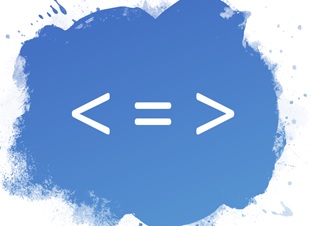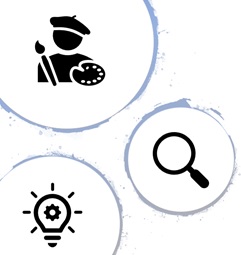What We’ve Learned in the Past Nine Months About What Works
The poet W.B. Yeats once claimed that “Education is not the filling of a pail, but the lighting of a fire.” For so many students, distance learning has reversed that: without the spark of in-person interaction, the “fire” goes out, and all they’re left with is the “pail.”
Or as one student told me back in April: “It all just feels like homework now.”
The good news is that fires CAN be rekindled, and the last nine months have given us some important lessons in how to fan the flames of student motivation. Struggling together, teachers have identified a few guiding principles that have been helpful in optimizing our courses for student motivation.
Less is More

Distance learning really ISN’T the same. Everything requires more mental bandwidth and effort than it did before. As numerous articles have pointed out, “Zoom fatigue is real,” and the longer our students are sitting in front of a screen, the more school is going to feel like a chore. Dean Deaver, another fantastic ReadTheory contributor, wrote about how to effectively manage daily assignments in his article Organizing Online Assignments if you’ve not yet landed on a strategy that seems to really work for your class.
“Less is More” does NOT have to mean lowering the bar. Instead, it means choosing quality over quantity. It means deciding what we really want students to learn and then cutting, streamlining, and decluttering everything else.
“Less is more” might involve:
- Narrowing curriculum to focus on essential standards.
- Dropping weekly vocabulary lists or daily grammar practice (“pail-filling” activities).
- Replacing handouts full of questions with just one or two reading tasks.
- Focusing Zoom meetings on a single clear objective.
- Organizing LMS landing pages so that students have a direct path to just the information they need for that day.
I have found that this process of reducing has actually given the essential stuff – growth in reading, writing, and thinking – way more room to breathe. Students feel less overwhelmed and scattered. My class becomes less of a curated to-do list and more of a day-by-day experience of growth.
Additionally, a major component of motivation is the value that we see in engaging with a task. If we want students to feel motivated to engage with our coursework, we need to foster a sense that what they’re learning is actually valuable. When selecting texts, I’ve always had the highest levels of engagement when I select texts students see as “important” because of the timely themes and serious issues they address – topics like racism, stereotypes, gender issues, and the effects of technology.
Small Goals, Clear Rewards

In his book Outliers, Malcolm Gladwell discusses three essential components of what he terms “meaningful work:” autonomy, complexity, and a direct connection between effort and reward.
When motivation levels are low, long task lists and far-off deadlines are likely to increase avoidance of coursework. They strain the connection between effort and reward. On the other hand, goals that are in reach and have a clear, immediate payoff are naturally motivating. Getting a “win” helps students feel successful and generates momentum.
If you have students working on a long-term project or writing assignment, consider chunking the work into small daily goals. Create a system that quickly acknowledges student effort and offers some feeling of payoff. Simple rubrics that focus on skill mastery are helpful for this. Instead of assigning a numeric grade to every task – which tends to actually have a de-motivating effect – consider offering one-sentence feedback that acknowledges growth rather than critiquing errors.
ReadTheory’s system is perfectly set-up to give your students this sort of immediate payoff (without you having to put in all the work!). Students receive small indications of progress after each reading they complete, as they gain “Knowledge Points” and work towards “Progress Badges.”
Choice is Powerful

Another component of Gladwell’s definition of “meaningful work” is autonomy. Especially in distance learning, students are generally more motivated to engage in learning activities in which they feel some degree of control over their choices.
Instead of assigning the same series of readings to the whole class, consider offering students a set of similar texts in which they can pick 1 or 2 pieces to explore. Book groups and literature circles can be a fantastic way to allow students to direct their own engagement with longer works of their choosing.
What to pair with those self-selected texts? Instead of reading comprehension questions, consider choice boards and activity menus that offer students options for demonstrating their understanding. Similarly, when crafting writing tasks, consider offering students a set of prompts to choose from or turning them loose to generate topics of their own.
Tap into Curiosity and Creativity

Our students’ curiosity is one of their greatest natural resources – and a perfect “fire-starter.” Creativity goes hand-in-hand with that. Offering students the opportunity to pursue their own interests and showcase their talents draws on their innate desire for self-expression and encourages them to take genuine pride in their work.
Problem-based and inquiry based approaches can help teachers tap into these powerful energies. Getting started with these methods can seem overwhelming at first, but it doesn’t have to mean overhauling your entire course.
In fact, short inquiry assignments can be easy to mix into our existing content streams. We can pose a compelling central question and then give students 3 or 4 short texts that each shed light on possible answers. For example, my students engage with background readings on the Holocaust while seeking to answer the question, “How do atrocities like this happen?” After reading and compiling notes on their own, we hold a Socratic Seminar in which we construct answers to that question as a group.
Similarly, our curriculum is rife with opportunities for engaging creativity by slightly reframing our assignments. For example:
- Instead of asking questions about characterization, have students create a Body Biography.
- Instead of a formal analysis of diction and tone, ask students to write a paragraph in the voice of a particular author or narrator.
- Instead of reading quizzes or chapter summaries, challenge students to compose a Twitter or Instagram post from the perspective of one of the characters.
- Instead of ending a novel study with a test, essay, or book report, let students express their understanding of the story through a physical project, or any of these other creative ways to respond to the text.
The Struggle is Real… but You’re Not Alone

Even with all of these strategies, keeping our students motivated may still feel like a struggle. And honestly, that’s OKAY. Motivation has been in flux for all of us this year (see “How to Maintain Motivation in a Pandemic” or “6 Ways to Rediscover Motivation During Covid-19”, for example). Acknowledging that – getting real with ourselves and our students about how challenging this all is – may actually go a long way in helping to re-light some fires. It frees us, and our students, from the feeling that somehow we’re failing.
Remember that you’re not alone in this struggle. We’re all feeling like first-year teachers again. One of the greatest insights I was given in my actual first year of teaching was that every day is a chance for a fresh start. That’s still true now. Just because yesterday’s efforts bombed doesn’t mean you can’t shift gears tomorrow. And it’s okay to start small. Cut one activity. Try one new strategy. Keep it simple. And then tomorrow, try again.
You never know which spark might catch




3 replies on “Motivating Students During Distance Learning”
Very inspirational and relevant. Thank you, David.
Thank you for this! I will share it with my colleagues – I am a high school SPED teacher trying to get students that have historically struggled to engage in distance learning. I’m doing specific things for my caseload but know that ALL students are having a hard time.
It’s fascinating! Thank you for this thought- provoking article, full of ideas for further development